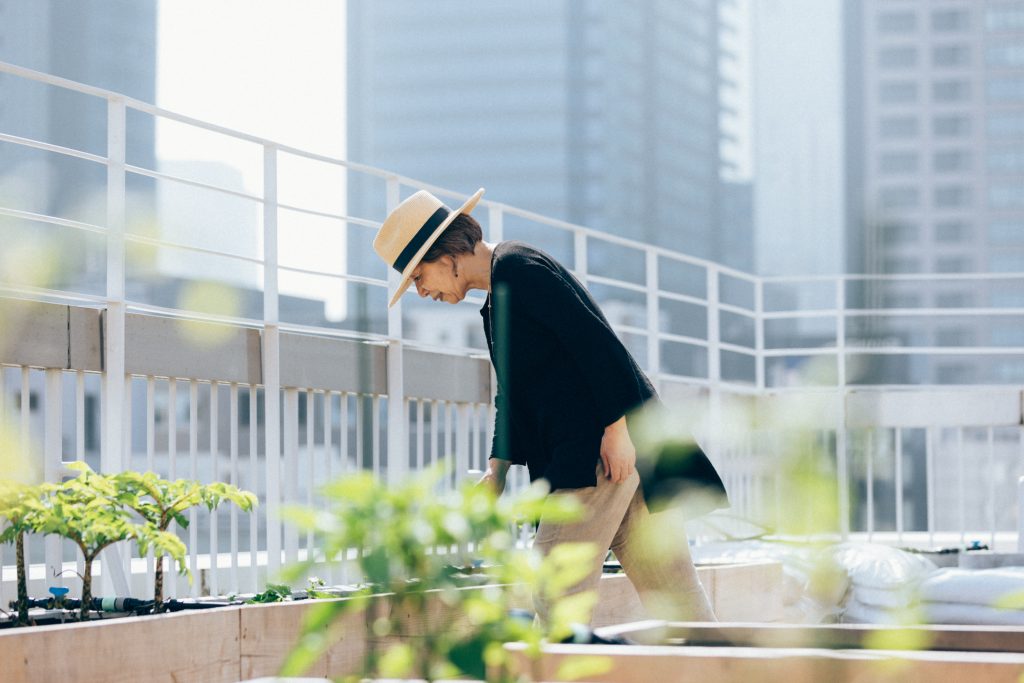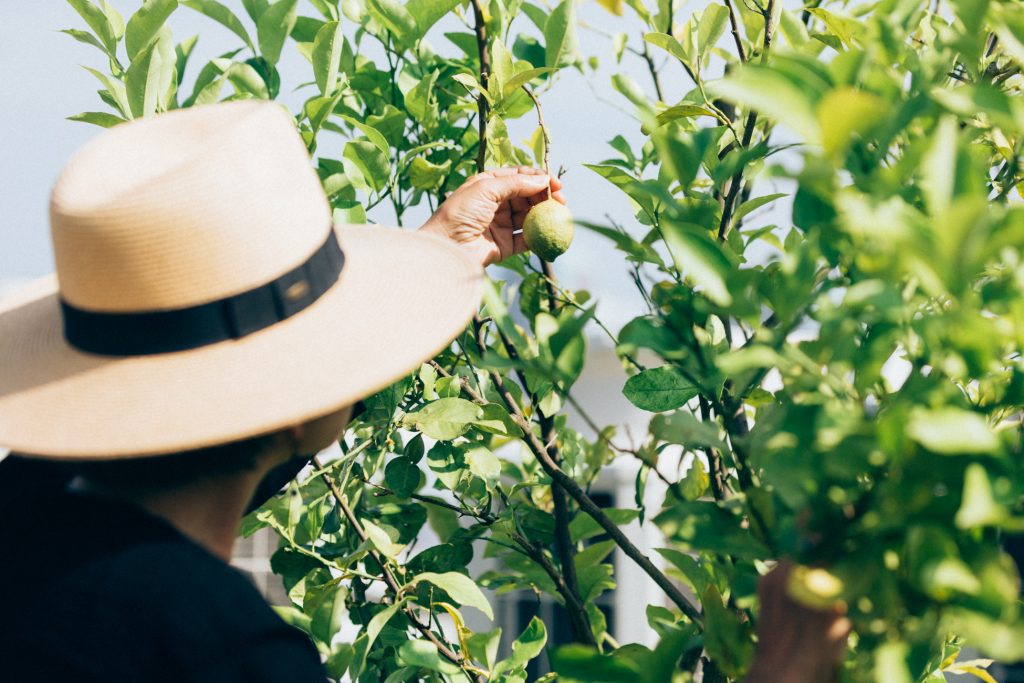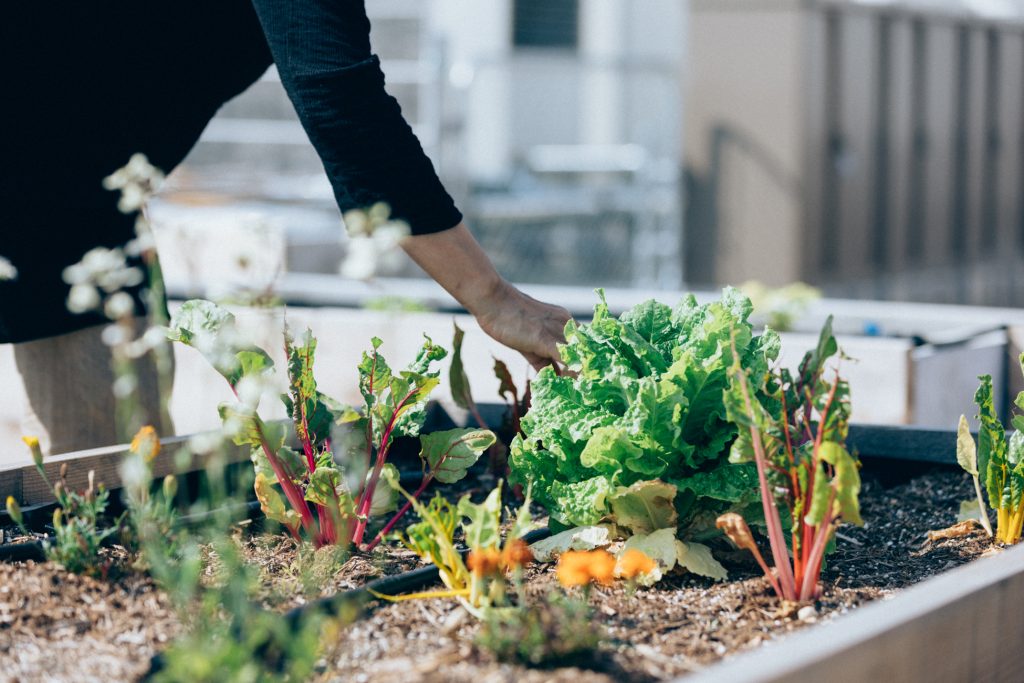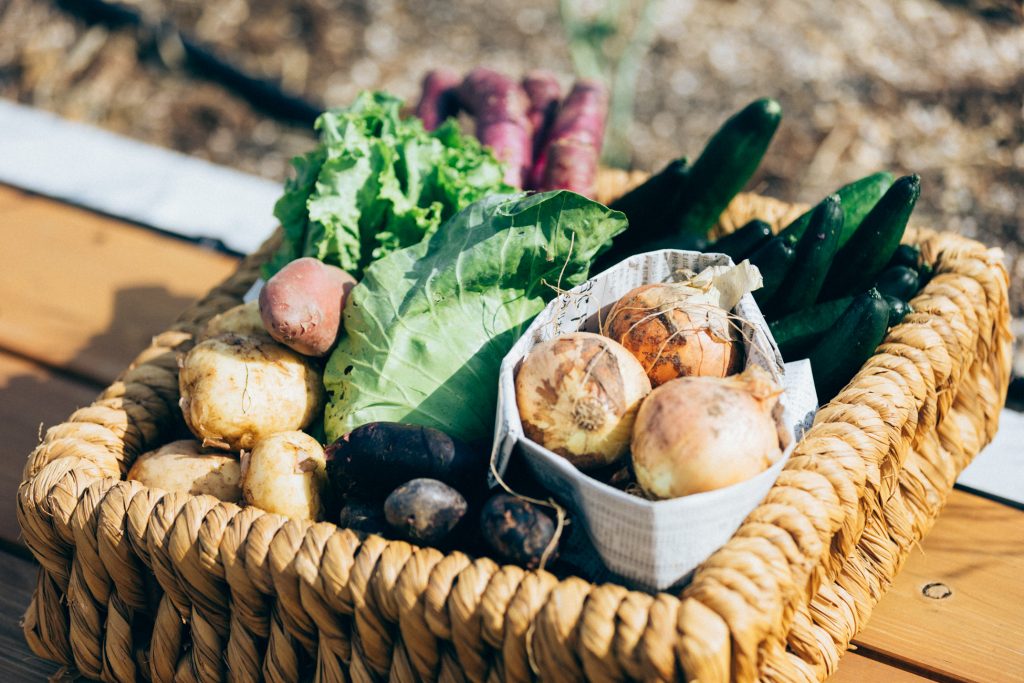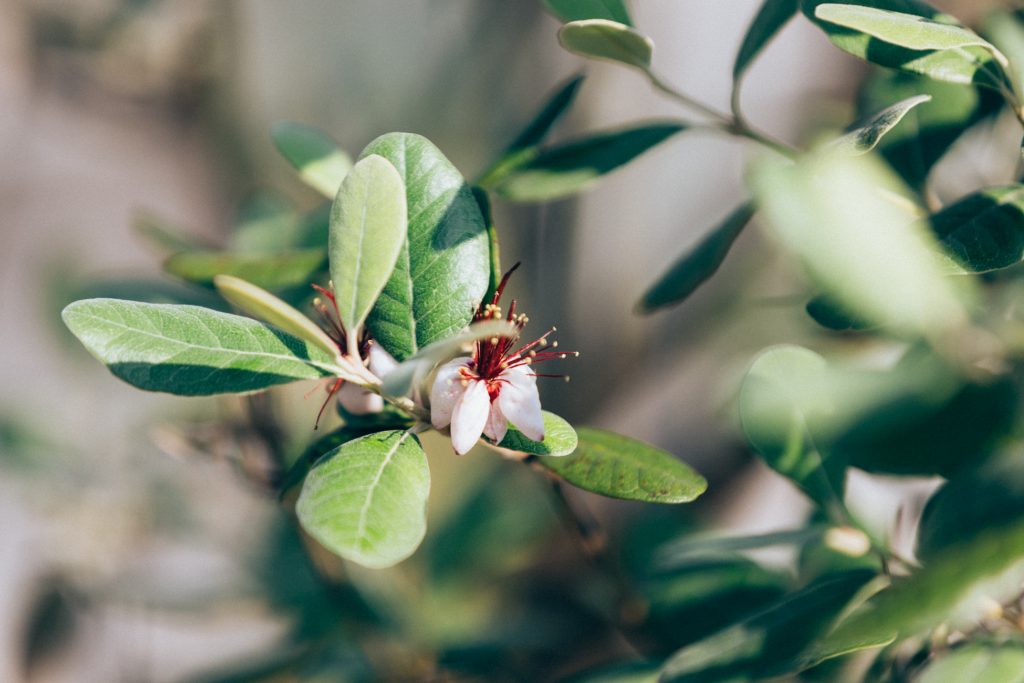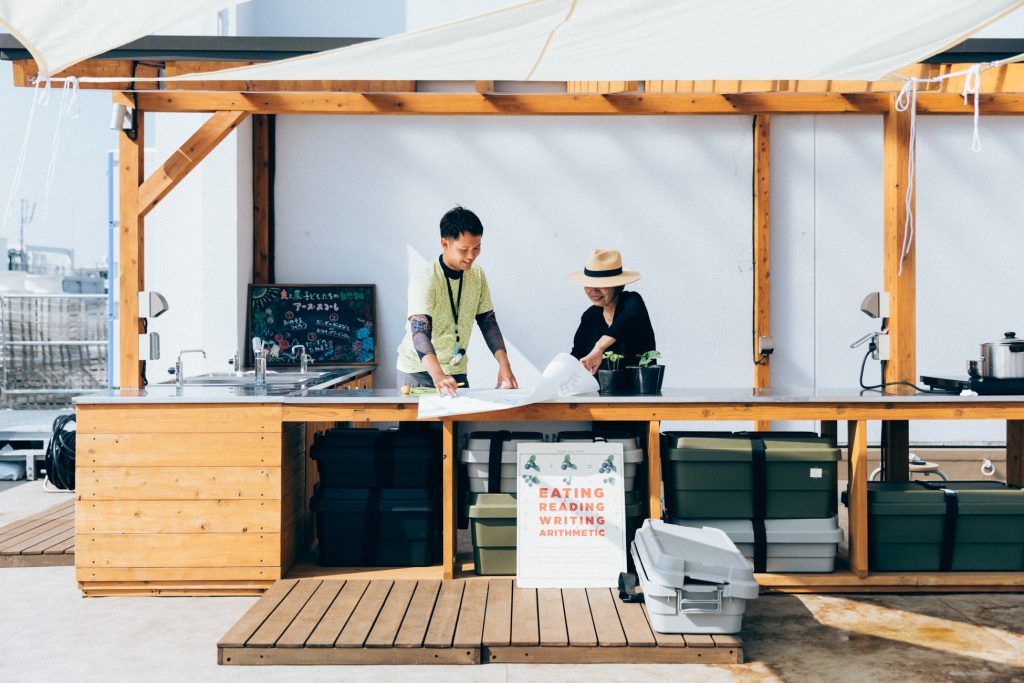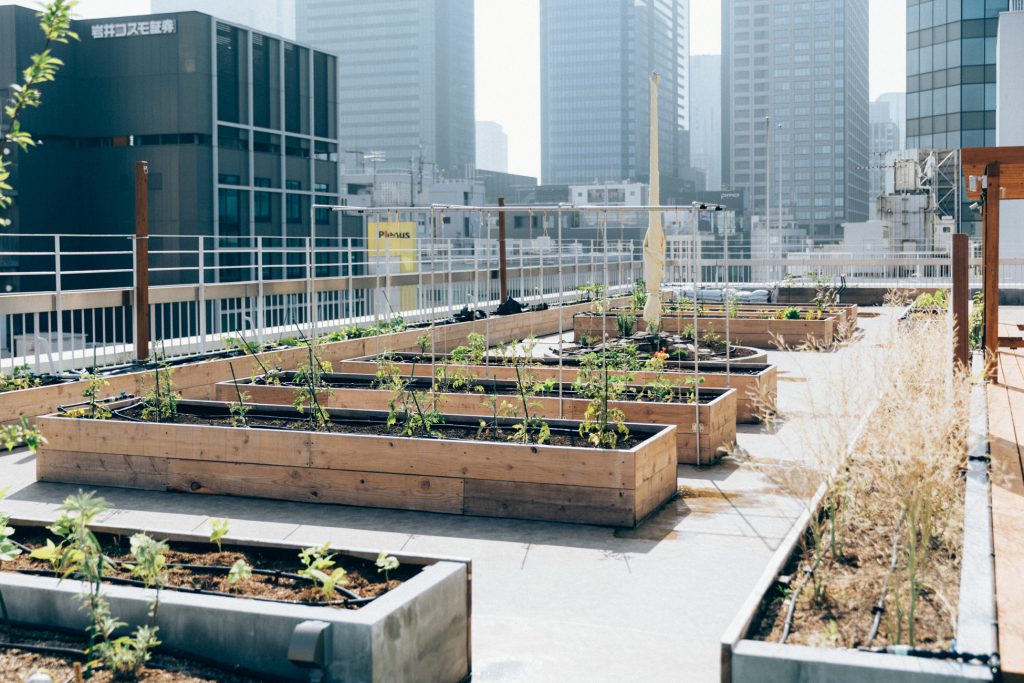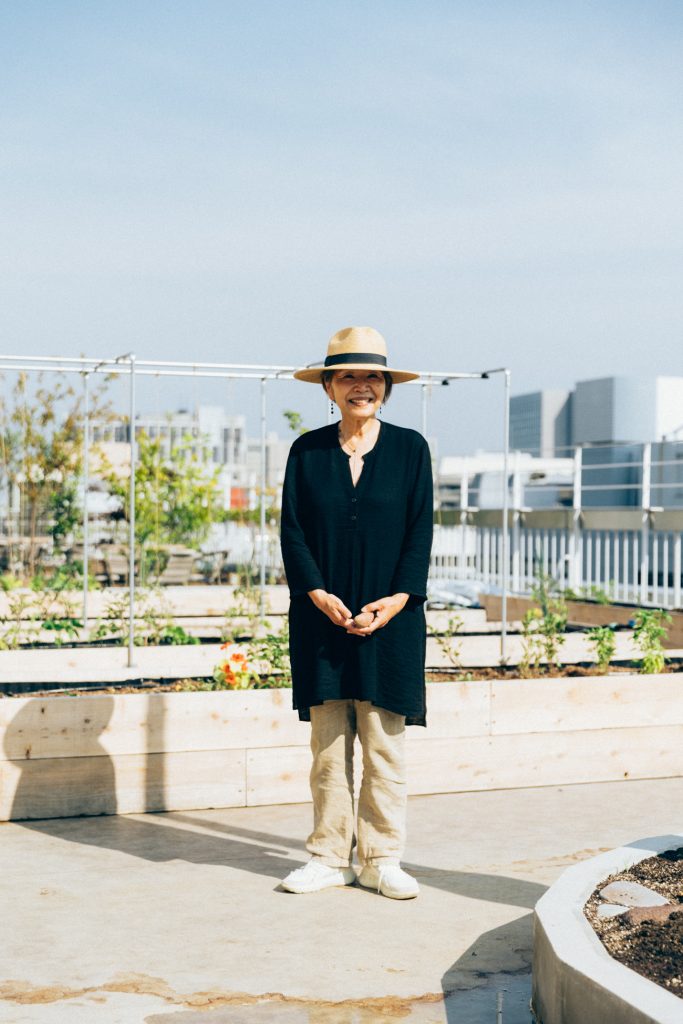


2022.07.15
Hiroko Horiguchi
Representative of Edible Schoolyard Japan Incorporated Association and researcher of agricultural education.
The connection between eating and living
A delicious revolution in Kabutocho is born
●Where are you from?
I was born in Odawara City, Kanagawa Prefecture. I spent my college years in Yokohama and began my working life in Tokyo, living in Nishiazabu for about 30 years. However, this April I moved to Manazuru City and now I commute to Tokyo for work.
●What was your childhood like?
My mother grew flowers in the garden and I would often spend time alone there. She was really talented at gardening and grew lots of rare plants such as ‘the moon beauty’, which is said to flower on nights with a full moon. She was a person who looked after plants as if they were her own children. So I look at flowers and observe them with curiosity; they remind me of the strong memories of flowers that I made when I was a child. Apart from that, I also liked to draw pictures and write poetry. I think I was a pensive type. Luckily, my teacher at school was able to draw out my temperament and helped me to express myself in a more tangible form. There used to be a section in the Asahi newspaper called “Little Eyes” that published poems from elementary school students, and I was selected twice!
●How did that teacher bring out your temperament?
It was my 3rd-grade elementary school teacher. Now that I think about it, I think that teacher was always very good at talking to the kids and bringing out their feelings. Up until they helped me, I was very shy, but slowly, I became able to get out in front of people and talk to them. I also had a good encounter with an art teacher at junior high school. They were a painter by profession, and their sensibilities were somewhat different from those of the other teachers, which must have been interesting to me as an adolescent. In class, I drew a picture and wrote a poem about a scene from my childhood when I was playing in my mother’s garden, and the teacher gave me so much positive feedback. I still remember that very well. After it rains, the water seemed to dance around on the leaves, and the droplets of water seemed to pop off the ground, and I was probably learning about surface tension, and I was staring at the water …… but I was so excited to see the art in such a way. But even though I had developed an interest in art, it was nipped in the bud when I entered the battleground that was exams! I couldn’t get used to the culture of the girls’ high school I attended. The sole purpose of passing entrance exams made me lethargic and I would often turn up late and leave early. It felt like there was nothing to get excited about, and it made me depressed. Once I made it to university, I felt a sense of freedom.
●When you were a student, how did you envision your future?
The future? It has always been a blur. I had been attending an English cram school since 5th grade, and the teacher was very strict about pronunciation. At that time, around 1965, he went to the trouble of using a video camera to film the tongue movements inside my mouth to teach me correct pronunciation, and I learned by reviewing the footage! It was such a strange school, but I continued to go because I enjoyed the delicious cucumber and ham sandwiches made by the teacher’s wife, who loved England. She probably served it with Wedgwood teacups, and I guess I was attracted by her exotic taste. I think it was there that my interest in the unknown world had begun to grow. When I turned 20, I started thinking that I wanted to study abroad. I even took the entrance exam and prepared to move, but when my parents asked me, “What do you want to do in the future?” I couldn’t answer because I was stuck. I was still unable to form a vision of my future. My mother told me, in no uncertain terms, that I couldn’t study abroad if that was the case, and I took that opportunity to leave home and start living alone in Tokyo!
When I learned about "The Three Sisters," a Native American farming method in which three different plants are grown together and they help each other survive, it touched me tremendously. From there, the question of what agriculture is all about began.
●Have you been able to discover what you want to do in Tokyo?
Yes, I have! A friend of mine introduced me to a part-time job at the evening newspaper ‘Nikkan Gendai’. Back then, I was writing program listings by hand on manuscript paper, and that was the kind of work I was doing. Then I started going to TV stations and record companies to conduct interviews and I guess my natural curiosity came out; I started to feel that this job was interesting and fun. Around that time, the magazine ‘Popeye’ was launched, so I would often visit the editorial department of ‘Magazine House’ in Higashi-Ginza to write articles. Gradually I became more and more involved in the world of editing and magazine production. Later, I joined an editorial production company and was involved in advertising production and the first issue of a magazine that was targeted toward women. Then, by the time I turned 30, I became a freelancer.
●What led you to become interested in gardening while you worked in the world of magazines and advertising?
The bubble economy had burst and the economic situation made it difficult for freelancers. I decided to set out on a new journey, writing articles and producing magazines and books while traveling, and there was a big opportunity that led me to what I’m doing now. I was exposed to a Native American farming method called “The Three Sisters” in a town called Taos, New Mexico. This traditional farming method involves three different plants that are grown together. They help each other to survive, much like the fairy tale of the three sisters. The three plants are corn, pumpkin, and beans. The pumpkins grow horizontally on their stems, and their leaves protect the topsoil from drying out. Beans grow while intertwining with corn, and at the same time, they enrich the soil by producing nitrogen. When I learned about “The Three Sisters,” my image of agriculture changed completely. I thought, “How interesting, how spiritual, and how beautiful!” From there, I was drawn into the world of agriculture.
●And from there you decided to start gardening and making your own food garden?
No, not yet. The time it took me to start gardening is long enough that I could write a book! After my learning experience, I became interested in rice and ancient farming methods. The providence of the universe is very much involved in the growth of plants, such as flowers opening on a full moon or trees becoming good timber when cut on a new moon. During my travels and whilst I was covering ancient rice cultivation, I met Kinsei Ishigaki and his wife Akiko on Iriomote Island. They are the main characters in the fifth version of the movie ‘Gaia Symphony’ and Akiko is a dyer and weaver who produces beautiful cloth called ‘Bashofu’, which is made from the fibers of a banana plant and dyed with plants from the island. Iriomote Island is a double-cropping area, and the Basho trees that grow along the rice paddies are felled after the rice is planted in May to make the yarn. The two crops are connected: one for eating and the other to produce clothing. Encountering a landscape where all activities of daily life are connected, I realized that agriculture is essentially something that exists in our everyday lives.
Eating and living, growing plants, and watching over and nurturing children; it all seemed to become clear to me when I first visited the Edible Schoolyard.
●How did you find out about Edible Schoolyard?
It was my first visit to San Francisco in a long time. There is a beautiful farmer’s market, and I happened to find an article in the local newspaper about children selling vegetables grown in their school gardens. The school was the Edible Schoolyard at Martin Luther King Jr. Middle School in Berkeley. The following year, I formally requested an interview and visited the school in 2004. The Edible Schoolyard was established in 1995, but at that time, the school was in very bad shape, and racially fuelled fights between students were endless, to the point that police officers were stationed there. Seeing such a negative scene, some people were deeply distressed and stood up for themselves. One of the women who lived in the neighborhood was Alice Waters, the owner and chef of America’s first organic restaurant “Chez Panisse” and an international food activist. Her activism was brought to light when she claimed in a newspaper interview that junk food was the cause of the children’s rough behavior. She proposed to build a food garden in the schoolyard of a junior high school and teach the children how to eat and how to grow their own food. The lessons immediately captured the children’s hearts, turning conflict into mutual aid and getting them hooked on learning. The garden and kitchen classes ended up changing the school culture itself. Alice says that learning to eat first is more important than reading, writing, or calculating. Berkeley is the legendary birthplace of the hippie movement and counterculture of the 60s and 70s, where she coined the phrase ‘Delicious Revolution’. “Even Berkeley, with its love and peace, couldn’t stop the war, but we can start a revolution with a knife and fork that will change the world,” she said. Because we all love good food, and good food can only come from a healthy earth.
●How did it make you feel, witnessing such a place where Alice’s words had come to life?
When you are emotionally moved, you feel an irresistible urge to do something. Eating and living, growing plants, and watching over and nurturing children; it all seemed to become clear to me when I first visited the Edible Schoolyard. I visited multiple times over three years and continued my interviews, and in 2006, I published “Edible Schoolyard,” a book on food education. As I continued my interviews, I became more and more interested in edible schoolyards, and I had a desire to one day produce a textbook on vegetable garden education, but it never occurred to me at the time that I would start an activity like Alice’s, and most of all, I don’t see myself as a revolutionary! But when I published the book, I wanted to share what I felt in Berkeley and the thoughts that swayed me. I was invited to speak at various places, and one day I was asked if I would like to create a community garden.
●Where did you build the community garden?
By sheer coincidence, it was Odawara, my hometown. I invited my friends to join me in this project to build two community gardens and start a “parent-child nutrition and vegetable garden class”. The most important thing in life is to eat, and if we can grow food, we can survive. I also think that the most important thing to maintain immediately after a disaster occurs is not infrastructure but in fact vegetable gardens. When the hurricane hit New Orleans, the city was devastated, but the first group to recover were the Vietnamese who were able to cultivate their fields and grow their own food. Where there is food, people gather, and that is where business begins. In fact, there is also an Edible Schoolyard in New Orleans, and even there, the children recovered quickly from the disaster.
At ‘Edible Schoolyard’, we place great importance on children being who they are and acting independently.
●Having experienced the earthquake disaster, did it lead you to put more effort into your activities?
Yes, it did. It reassured me that I was on the right path. Being in my 50s, I started to think about how I wanted to live my life in the future and it made me realize that I want to contribute to the establishment of edible schoolyards in Japan. Many people came to me saying they wanted to know more, and I also received many offers to do a food garden at my house. It was especially significant that the principal of Aiwa Elementary School in Tama City, who read our book, approached me and asked me to implement a vegetable garden and nutrition education program. Actually, we did this once at Nakahata Elementary School in Shibuya Ward, and the vegetable garden became rich with many living creatures, including frogs. However, the neighborhood was a residential area, so people began complaining about the noisy frogs! Unfortunately, the principal retired, and our activities at Nakahata Elementary School ended after one year. I learned that it’s difficult to have ongoing activities in schools because teachers and staff are constantly moving and changing schools. So when I was approached by Aiwa Elementary School, I accepted on the condition of a 90-minute class slot that I would run for three years. However, two years later, the principal was transferred, and at first, I thought I could no longer continue the program, but the children asked the newly appointed principal not to eliminate the classes. I was very surprised by this. I was so moved! With the help of the children, we were barely able to continue. It was exactly what we had been taught in Berkeley, “The greatest ally of the Edible Schoolyard is the children.”
●Does this mean that the children were able to develop a spirit of self-motivated learning through food and agricultural education?
Children live in a world full of demands: “do this” and “do that”. I think that ultimately, they feel uncomfortable living in such a world. At ‘Edible Schoolyard’, we place great importance on children being who they are and acting independently. I felt that our thoughts and feelings were conveyed to the children and they accepted us.
●When was the Edible Schoolyard in Japan established?
In 2014. When the practice at Aiwa Elementary School began, and a direction was found, we established a general incorporated association. We are committed to working in public schools, but sometimes people told me “if you were to work in private schools, wouldn’t you be able to get more funding? Why do you work in public schools where you have to go through so much trouble?” When I told Alice that I wanted to start ‘Edible Schoolyard’ in Japan, she suggested that we do it in public schools. Because it’s public, we can reach so many more children. She said that because of the variety and diversity of children in public schools, ‘Edible Schoolyard’ could contribute to the challenges that arise in the future. ‘Edible Schoolyard’ Japan is now in its ninth year.
When I started thinking about how we can live comfortably in such a situation and what we can do to make the world move in a better direction, I decided that I wanted to live with the future of our children.
●What did you personally gain from the activities of the ‘Edible Schoolyard’?
Our future may be very limited so it can be difficult to dream big. The effects of climate change are so great that we are all living with the realization that our future is not forever. When I started thinking about how we can live comfortably in such a situation and what we can do to make the world move in a better direction, I decided that I wanted to live with the future of our children. That is where there are smiles and joy. Through the ‘Edible Schoolyard’, I was able to touch the soil with the children, grow vegetables, taste them, talk about them, and laugh with them, and the child inside me began to rejoice and move. No matter what the future holds for us, there is something in the present moment that we can believe in. That positive way of being was taught to me by ‘Edible Schoolyard’.
●Have there been any changes in your activities due to the pandemic?
Until 2019, only a handful of people truly understood what we were doing. Our activities are based on the concept of “food” as the axis of learning, and through the creation of soil, growing vegetables from seeds, harvesting, and cooking, we are bringing the child, their friends, family, and school together in the classroom of the school vegetable garden and discovering new ways to interact. It is an everyday activity. But as soon as the pandemic happened, it got a lot of attention. The understanding of schools has also changed dramatically. Even with the pandemic, the principal and the homeroom teachers were willing to let the children experience classes where they could learn safely because they were no longer able to play outside. I think they all realized that what they had taken for granted was actually not the norm. Eating is important. I think more people are paying attention to what and how they eat and where food comes from, rather than just filling their stomachs. This is a big change.
●What led you to create Edible KAYABAEN in Kabutocho?
In November of the year before last, I received an email from Heiwa Real Estate. They said they wanted to create a rooftop vegetable garden that would nurture children’s zest for life and help to revitalize the local community. Thanks to the involvement of Ms. Satsuki Morita of Universal Gardening Company we were able to realize the project. At first, I was like, “Kabutocho, Kayabacho?!?!”. I only had an image of a financial district. But at the same time, I felt that big changes, ones that could change the future of children, could come from unexpected places like this. Chuo Ward is generous in its support for child-rearing, and the population of children is gradually increasing, which is why they approached us. As we listened to what they had to say, we became excited. Immediately, the image of creating a community garden on Wall Street in New York came to mind. Would Alice take on the challenge? I imagined that she would and that thought led me to accept the project. We accepted knowing that Heiwa Real Estate would understand the purpose of our activities and support us.
I want to challenge myself and see how far I can push the boundaries and possibilities. I believe that by growing a variety of plants, the character of this place will become apparent.
●What kind of vegetable garden are you trying to create at Edible KAYABAEN?
Construction of the garden began in December of last year. We envision the garden to be a space where the concept of diversity and circulation is alive. When creating a vegetable garden, most people tend to limit themselves to plants that are easy to grow, but I want to challenge myself and see how far I can push the boundaries and possibilities. I believe that by growing a variety of plants, the character of this place will become apparent. Trial and error are very important. Our mentor, Phil Cashman, who designed the garden, has a great influence on our permaculture philosophy: The problem is the solution, and the solution is in the problem. If you don’t fail, you won’t succeed. I believe that the next year will be a series of such observations, but in the not-too-distant future, we will be able to see the great mechanism of the natural world, where plants help each other and other living things, such as insects, to live together. I believe that in the not-too-distant future, an ecosystem unique to Edible KAYABAEN will be born.
But the current situation is full of problems. The intense direct sunlight shines on the rooftop and the wind is strong. The heat this summer has been extraordinary, so it is a harsh environment for the plants. The garden staff is observing the growth of the plants every day. Growing vegetables here in the summer is like growing vegetables in the desert! Even so, the vegetables are responding to the expectations of the staff, who watch over and care for them like a mother, and are gradually putting down roots. The color of the leaves are changing vividly as if the tomatoes have come to life.
I think the soil will settle down in the fall, so there will be more possibilities. Since the floor is concrete, my imagination swelled with the idea of covering this area with plants, and I hoped that the pumpkin stems would crawl and the leaves would cover the floor, but that proved hopelessly impossible! The concrete is too hot, so the pumpkins are blooming safely on the soil of the raised bed. In fact, I am planning to reverse the energy of the sizzling sun and cook with a solar cooker. We will be doing such experiments with the children, cooking with the power of the sun as a heat source.
●Do you have any plans for future activities?
We are working as a team, so everyone has their own hopes and ideas, and I think it is important to make everyone’s thoughts come true, not just mine. In terms of my own goals, I would like Alice to come and see Edible KAYABAEN here in Kabutocho one day. I look forward to the day when we can make it happen. By then, I would like to make it a more comfortable place and create an open garden community where everyone involved here is valued and respected.
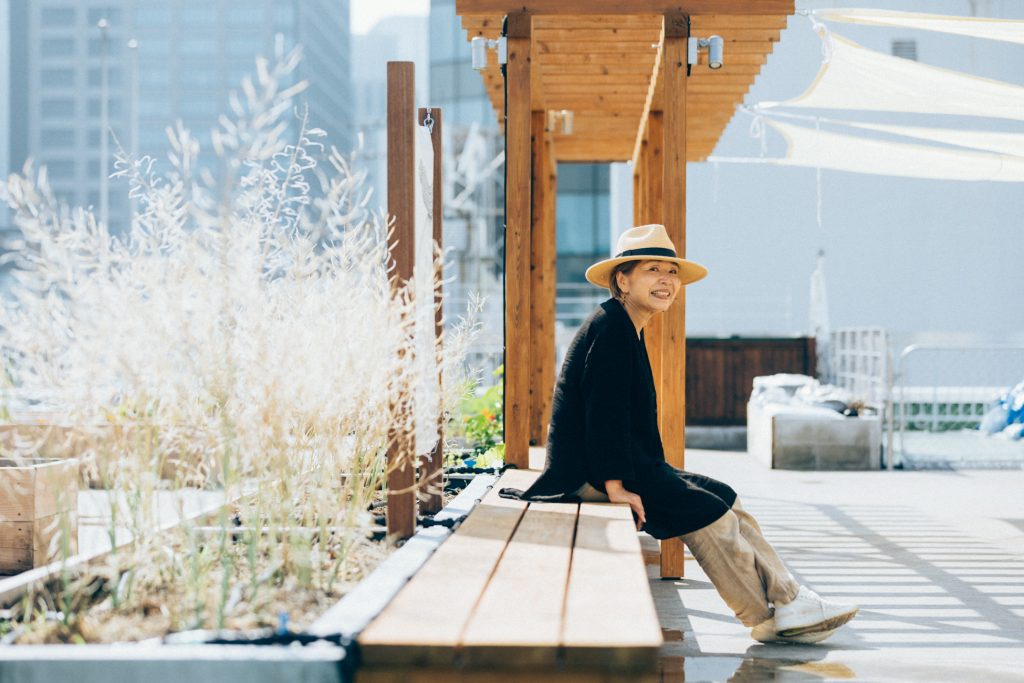
Hiroko Horiguchi
After working as an editor, she published “Food and Nutrition: Garden Edible Schoolyard” in 2006, the first book to introduce edible schoolyards to Japan. She has also translated and edited books such as “The Art of Simple Food” by Alice Waters. She has worked on edible classes in collaboration with Aiwa Elementary School in Tama City, Tokyo, and founded Edible Schoolyard Japan, a general incorporated association, in 2014. This year, she launched the Edible KAYABAEN project in Kabutocho.
Text : Momoko Suzuki
Photo : Naoto Date
Interview : Momoko Suzuki
Hiroko Horiguchi
Representative of Edible Schoolyard Japan Incorporated Association and researcher of agricultural education.
The owner of Tatsumi, Kappo Cuisine.
Interesting people in Kabutocho
The owner of Tatsumi, Kappo Cuisine. Heiwa Fudosan told me the fried horse mackerel set lunch was delicious! So I went there at night. It was really interesting to talk with the owner over the counter. He is a person who has seen the history of this place, Kayabacho, through its food. Tatsumi’s owner, who used the kitchen as a playground when he was a child and grew up using his five senses and developing his palate, is the best! I will go back again.
